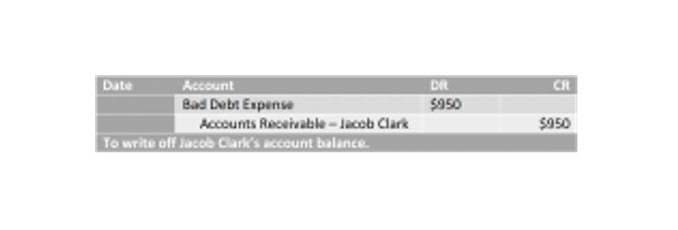
Please know that adding or changing the opening balance can affect the reconciled account and cause discrepancies in future reconciliations. Since you’ve reconciled your account without entering one, this will create a difference between your bank and QuickBooks balances. Opening Balance Equity is affected by transactions that involve equity accounts. For example, if a new owner invests cash into the company, the cash account is debited, and the Opening Balance Equity account is credited for the same amount. It contributes to the accuracy of financial reporting, providing stakeholders with reliable data for analysis and strategic planning. Ultimately, this practice promotes a more transparent and trustworthy financial environment, aligning with sound accounting principles and enhancing the integrity of the organization’s financial management.
Balance Sheet 101: Understand Opening Balance Equity Accounts
- When setting up a new company file, QuickBooks will prompt users to enter the opening balances for each customer account.
- These equity accounts are just labeled differently to represent the ownership or form of a business.
- Once you have your bank statement and the pending transactions clear the bank, come back and adjust your opening balance entry.
- It’s worth noting that some of them are a normal course of things, but others might require more of your attention.
- These equity accounts have been labeled differently in order to denote the ownership or form of a business.
- Opening balance equity is a term used in accounting to describe the initial balance of equity in a business at the start of a new accounting period.
This entry impacts the accuracy of financial reporting, as it ensures that the transitioning period’s discrepancies do not affect the organization’s ongoing financial records. Understanding and appropriately managing Opening Balance Equity is vital for accounting procedures and transactions to uphold the reliability and trustworthiness of the financial data. Whichever the reason is, having funds left in the opening balance equity account can cause problems for financial reporting. They mess up financial statements, making it hard for people to properly analyze a company’s financial performance and see how the company’s doing. It results in wrong decisions by investors, lenders, and experts who rely on accurate financial info.
- QBO only allows the creation of a singular account under the Opening Balance Equity (OBE) account detail type.
- At this point, I suggest looking at various scenarios where you might end up with a non-zero opening balance equity.
- Retained earnings refer to the profits earned by a company, minus the dividends it paid to the shareholders.
- Make sure the bank statement balance transaction accounts for uncleared bank checks while completing a bank reconciliation.
- Ultimately, this practice is crucial for maintaining the financial accuracy and integrity of a company’s records.
You Entered Inventory Initial Quantities
- It is calculated by taking the amount of money the owner of a business has invested and subtracting all liabilities and debt.
- Thus, the best way to resolve this is to undo all the reconciled transactions and create a Journal entry (JE) to record it.
- So a good rule of thumb is closing out the opening balance equity account in QuickBooks and transferring the balance to the appropriate equity accounts, ensuring that your accounting records are accurate and up-to-date.
- If you have a balance in this account, you need to work with your accountant to reallocate the balances to their proper accounts in the ledger.
This step is essential for managing your inventory, tracking costs, and making informed decisions about purchasing and selling products. Opening balance equity account is located under the equity section on a balance sheet and is a special account only used by a computer. Thus, if you want to create a new asset account with a balance, you need to balance it out by the same amount on the other side of the equation.

You create a company file in QuickBooks for the first time

It simplifies the reconciliation procedures by eliminating potentially confusing amounts, enhancing the accuracy of financial records. This process involves comparing the transactions recorded in the bank statement with those in the accounting software to identify any inconsistencies. By matching these records, businesses can detect errors, unrecorded transactions, https://www.bookstime.com/blog/accounting-for-technology-companies or bank fees that may have been overlooked, ultimately leading to a more accurate portrayal of the company’s financial standing. To begin, verify that the opening balance entered matches the actual opening balance from the previous accounting period. Next, review any unreconciled transactions and discrepancies to ensure accurate financial records.

If the company has outstanding vendor or customer balances, these should be entered as of the start date of the new company file. When you have a new vendor or customer entry with value balances, then you can create an opening balance equity account. The amount of money whether positive or negative at the beginning of the accounting period refers to the opening balance of an account. While the amount left in an account at the end of an accounting period refers to the closing balance.

The Opening Balance Equity account is a temporary account that QuickBooks uses to offset one-sided entries that are created when an opening balance is input into an asset or liability account. You should always investigate entries that QuickBooks has made to Opening Balance Equity to determine what the actual entry should have been. The best way to fix or eliminate Opening Balance Equity is to make a journal entry transferring the amount to the proper accounts. If you’re unfamiliar with debits and credits and journal entries, you might need the help of a bookkeeper; see our guide on what a bookkeeper does.
How to Zero Out Opening Balance Equity in QuickBooks?
Ultimately, this practice is crucial for maintaining the financial accuracy and integrity of a company’s records. Saving and closing the journal entry marks the completion of the process to zero out Opening Balance Equity in QuickBooks Online, ensuring accurate adjustments and reconciliation of financial statements. Keep in mind that closing the balance equity to retained earnings or to owner’s equity is essentially the same concept. So a good rule of thumb is closing out the opening balance equity account in QuickBooks and transferring the balance to the appropriate equity accounts, ensuring that your accounting records are accurate and up-to-date. A common reason for a lingering balance on your opening balance equity account includes bank reconciliation adjustments that weren’t done properly. By entering the opening balances for your inventory items, you ensure that your inventory levels and cost of goods sold (COGS) are accurately reflected in QuickBooks.
Once all initial account balances have been entered, the balance in the opening balance equity account is moved to the normal equity accounts, such as common stock and retained earnings. From this point forward, it should no longer be possible to access the opening balance equity account, which means that access to the account should be locked down. Moving your existing books to QuickBooks without entering equity accounts will result in Opening Balance Equity what is opening balance equity because QuickBooks needs to balance debits and credits. This happens when you only import asset and liability accounts from your existing books to QuickBooks. To avoid this issue, import all accounts so that your opening debits and credits are equal. Gathering all the necessary information, double-checking the accuracy of the balances, and finalizing the opening balances through careful review are crucial to ensuring the integrity of your financial records.
